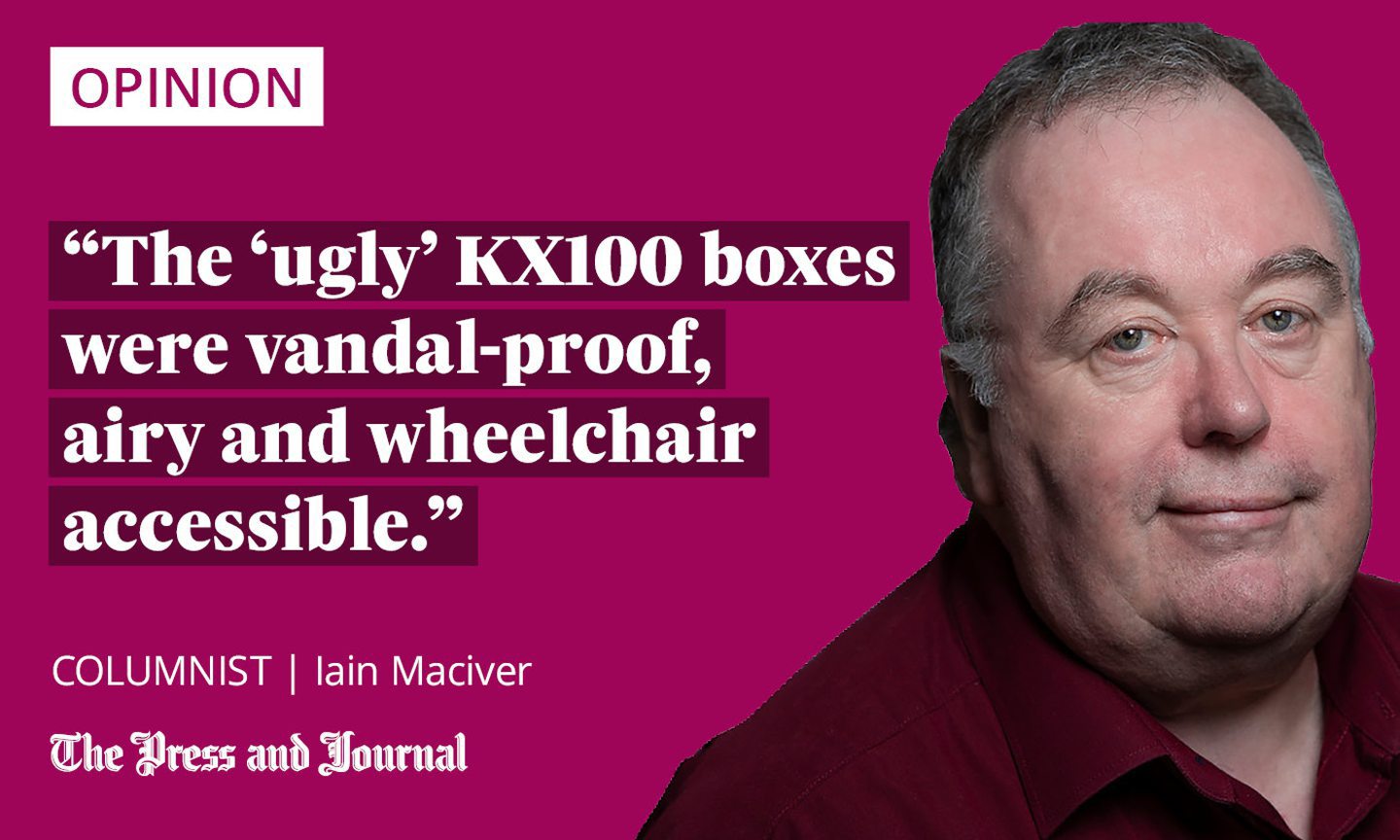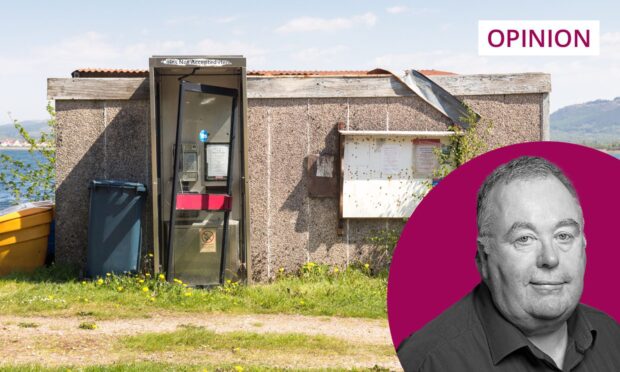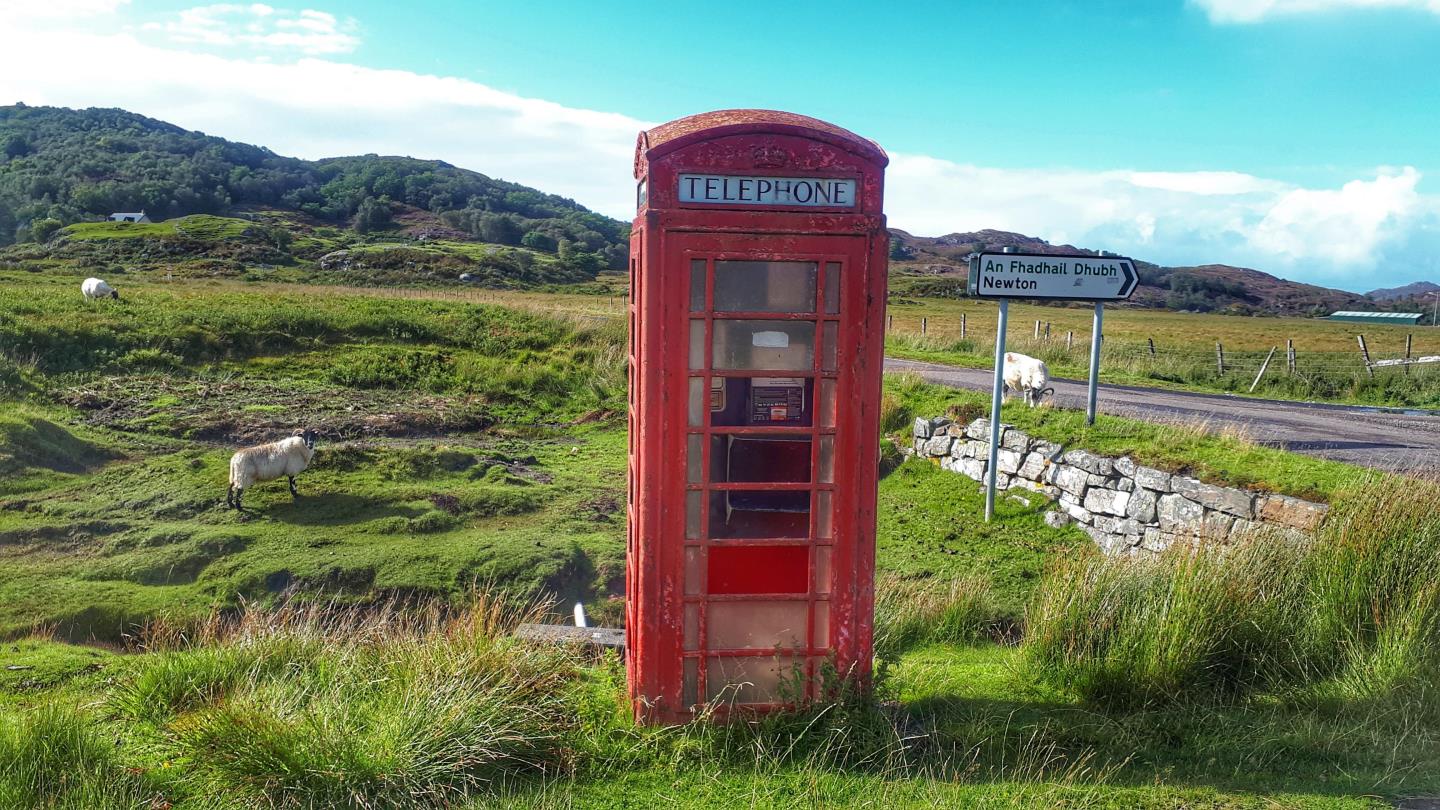People’s opinions do change over time. Every politician knows how true that is.
There was an outcry in the 1980s when British Telecom decided to do away with red phone boxes.
“Good heavens, they must not do that,” said every stuffed shirt between here and Kent. One said: “Red phone boxes are part of being British – like the royal family and voting for useless politicians.” Some opinions don’t change.
Now there is an outcry to save the replacement so-called KX100 boxes, which were dubbed “ugly” and “steely cold” at the time. The long-lamented red K2 and K6 boxes were designed by Sir Giles Gilbert Scott. Now, with only three well-preserved models of the KX100 left in the UK, the best example is on the road down to the village of Maaruig on Harris.
No less a body than the Twentieth Century Society has announced it wants to save the three boxes before it’s too late. The society campaigns to save outstanding buildings and examples of design which, it says, have shaped the British landscape since 1914. It says some are iconic, others are little-known gems, but all are irreplaceable and under threat.
The society is in the process of applying for listed status for the three surviving KX100 boxes, before their scheduled removal next year.
The “ugly” KX100 boxes were promoted as innovative. They were vandal-proof, airy and wheelchair accessible. They were also the answer to the K2 and K6’s dirty little secret. As the glass door didn’t go to the ground, they were easier to clean and less likely to smell of, well, pee.
With the KX100, if someone was suddenly caught short, the resulting stream would not pool, as it did on the floor of a smelly red box, but would flow away into the gutter or the grass, or just evaporate.
I am told the Maaruig box is sweet-smelling. Hearachs would never do that on the way back from the pub. The nearest hostelry is 10 miles away. That’s a long way to hold it in.

The winding road to Maaruig, by which the KX100 still stands proudly, is famous for another telecommunications milestone. That is also the road to the tiny village of Rhenigidale, which was the very last place in Britain to have a one-digit phone number.
Back in 1989, I was in a house there having tea, when the famous phone rang. Mrs Morag Macinnes picked up the receiver and I heard those immortal words: “Hello. Rhenigidale 1.”
You had to call the operator first and ask for the number. If it was an inexperienced operator, they’d often get confused and tell you to call the international operator.
The rocky terrain meant there was no 12-mile cable between them and Tarbert until 1990. Before that, the calls to Mrs Macinnes’s lobby were patched via a trans-Minch radio link from somewhere near Gairloch. It wasn’t that clear a line, as I recall.
Here today, gone tomorrow politicians
You will also recall that I have been banging on about poor services here for years. Our sparkling islands are treated as an afterthought by the Scottish Government. Nobody listened to me.
Then, Anas Sarwar rocked up on his election campaign last week, saying exactly that. He, too, thinks we are an afterthought. His supporters cheer him on at meetings. “Well done – time someone said it,” they roared, clapping approvingly. Er, what about me and my…?
Councillor Uisdean Robertson has also complained about the failures of Transport Scotland in doing very much at all to improve services in this part of Scotland far more than myself and Anas Sarwar. But, then, Mr Robertson is the chairman of transportation, so the continuing ferries fiasco, for example, has been on his desk for a long time. He also gets ignored by Edinburgh.
Coincidentally, the SNP recently launched a couple of new ferries in time for the election, but they won’t begin passenger service for some time. With a nod to the arch quizzer Sir Robin Day and his tetchy 1982 interviewee Sir John Nott, what are the public to make of these “here today, gone tomorrow politicians”?
Difficulties with our former phone services remind me that Peter, the late owner of a Stornoway taxi service, once told me of a call he got before phone numbers got longer. About 40 years ago, phone numbers in Stornoway were just four digits. In the early-1990s, they added the 70 before the four numbers.
Peter’s taxi phone rang and he picked up the receiver. The caller immediately said: “Hello, is that 4444?”
“Yes, it is,” replied Peter. The caller then said: “Thank goodness. Could you call 999 for me? I was doing some DIY and I’ve super-glued my finger to the phone button.”
Iain Maciver is a former broadcaster and news reporter from the Outer Hebrides



Conversation